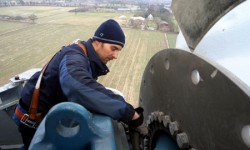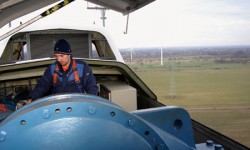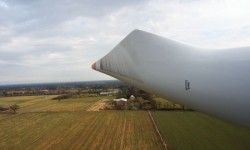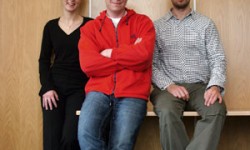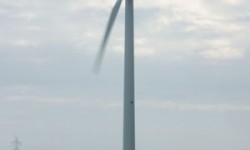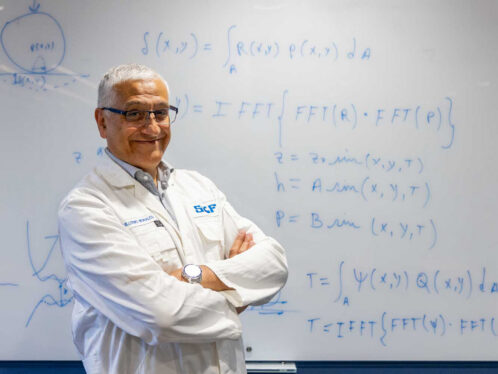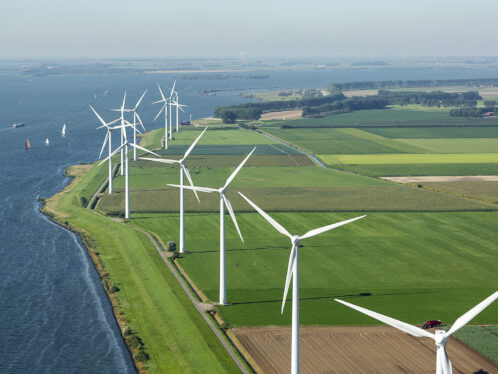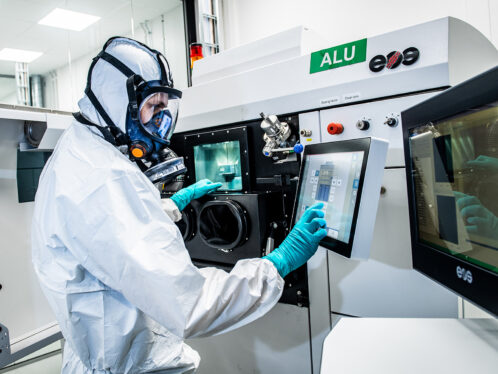
Holding the wind in one hand
For German wind park operator Prokon, success comes from controlling the entire operation – from planning at the beginning to dismantling at the end. And, in between, maintenance is a particularly high priority.
For German wind park operator Prokon, success comes from controlling the entire operation – from planning at the beginning to dismantling at the end. And, in between, maintenance is a particularly high priority.
Prokon is one ofGermany’s largest wind park operators, with a portfolio of successful projects across the country. According to Prokon company publicity, it all started with Käthe and Paul.
Käthe and Paul were the names of founder Carsten Rodbertus’s first windmills, two small 110 kW turbines set up in the west of the German coastal state of Schleswig-Holstein in 1993 as a response to the 1986 Chernobyl nuclear power accident. Käthe and Paul are still whirring, but they are now the private hobby of Rodbertus. His day job is running Prokon, which he has built into a company with 150 employees and 162 wind turbines in 20 wind parks across Germany.
Prokon has enough wind power projects for the next few years, but suitable sites are becoming more difficult to find. Thus, the company has diversified into the field of bio-fuel. Prokon has holdings in a company that operates a rapeseed oil mill. It also is part-owner of another company that converts vehicles for bio-fuel and is part of a joint venture to grow the crops needed in countries where there is still plenty of space for agriculture.
Prokon’s headquarters are in an oval, wood-clad building in Itzehoe, a small town in Schleswig-Holstein. Another wood-clad building is going up next door, partly to cope with the huge demand for bio-fuel. In addition, Prokon is promoting a bio-fuel oil project in Mpanda, Tanzania, and is involved in a fund-raising campaign for a secondary school there.
In bio-fuel, as in wind power, Prokon works toward a coordinated approach. In the case of wind power, that means Prokon plans the projects, arranges finan-cing, organizes construction, operates and maintains the wind parks and eventually will dismantle them and sell the raw materials for recycling. While many companies plan and operate wind parks, there are few that keep almost all work in-house. Particularly important to the company is mainten-ance. Michael Wika, of Prokon’s quality assurance department, says his department becomes involved even while the equipment is under warranty.
“We get maintenance training from the manufacturers right from the start, and we do our own monitoring parallel to theirs,” he says. “That makes us independent, and we know the equipment inside out before we have to take over responsibility at the end of the warranty period.”
But it goes furtherthan that. Wika’s colleague Lars Jenzevski says that, in addition to the manufacturers’ maintenance handbooks, Prokon has its own supplements based on its own experience. “Many of our solutions cost just a few euros,” he says, “and they’re often designed to prevent future problems.” Jenzevski is enthusiastic about all the little tricks he and his colleagues have discovered. He gives one example: “There’s a metal cover over the inside end of the rotor blade [which is hollow] to stop things from falling inside. We’ve rebuilt it because it was sometimes getting damaged by vibration.”
Many of the solutions are extremely simple. The electrical control box in the base of the wind turbine tower was sometimes overheating in summer. Prokon simply inserted four bolts to raise the cover a bit so that there was a gap at the top for heat to escape. “That was a 20-euro job,” says Jenzevski, but it’s saving thousands.
Other solutions are more sophisticated. For example, the pitch cylinders, which control the angle at which the rotor blade faces the wind, often suffered from oil leaks and were being damaged by parts coming loose in the hub. Prokon has worked with a supplier to develop an improved pitch cylinder with better seals and a shield to protect the cylinder from foreign bodies. “We’ve also drilled a hole in the unit just beyond the seal and led a small hose to a plastic bottle,” adds Jenzevski, “so if there is an oil leak, the oil doesn’t damage anything else, and we can spot the problem early on.”
The prioritygiven to maintenance has two main objectives: to save money and, even more important, to keep the windmills turning. Any time a windmill is not producing electricity, it becomes merely an expensive way of spoiling the landscape. Optimizing availability, says Prokon, is the main reason the company keep the work in-house. “We can adjust maintenance tasks and do less urgent work on days without much wind,” says Jenzevski. “If we earn more by letting the windmill turn, why not leave repairs for another day?” And Wika adds, “We have a very fast reaction time. If something urgent comes up, we can quickly take people off painting a tower and move them there.”
Prokon has service teams in each of the three areas where it has the most wind parks. The fact that the service engineers have often personally invested in their wind parks adds motivation to keep downtime to a minimum. But, as part of its quality assurance, Prokon also sends someone from headquarters to each wind park every three months to ensure that there is an outside expert viewing the situation.
Like most Germanwind parks, Prokon’s wind parks are financed largely by private individuals investing capital that doubles as security for bank loans. Prokon’s job is to attract people and organize loans. Profits depend on income from electricity generation, and a poor wind season, such as the 2005–2006 winter, can reduce income drastically. There may not even be enough to pay the bank, let alone distribute profits to investors. Alone among German wind park operators, Prokon guarantees shareholder disbursements. One reason it can do this, says Jennifer Rehse-Behling, of Prokon’s public relations department, is that it is now big enough to distribute the risk across all of its wind parks and across the 20 years of their projected life spans. Another reason is their maintenance concept. “We ensure high levels of operational availability as a result of keeping maintenance in-house,” she says. And, if all else fails, Rodbertus stands as guarantor, with his own private assets.
Germany is the European leader in installed wind power capacity, partly because of legal and financial provisions, which have allowed the industry to develop in a somewhat artificially protected zone. Now, as fossil fuel prices rise, wind energy becomes relatively cheaper, making it even more attractive to invest in this technology with its low impact on global warming. But Germany’s wind pre-eminence is also based on committed individuals who have made a business success of their ideological enthusiasm and who have infected their teams with their commitment.
Early warning
“That’s the good thing about having maintenance in-house,” says Michael Wika, of Prokon’s quality assurance department. “You can choose which spare parts you buy.”
In addition to supplying bearings to Prokon, SKF and Prokon are working on installing SKF WindCon, a condition monitoring system for wind turbines. SKF WindCon monitors various parameters related to the moving parts of the turbine. These measurements can be accessed over the Internet using WebCon, SKF’s data warehousing and Web hosting services. The system also issues warnings when problems require attention. Says Wika “We already have remote monitoring, but this will be far more concrete. The system is highly sensitive, and we can tell earlier if something will need attention in the future. It might also tell us we don’t need to take any action right now, but can wait until the next service.” The possibilities of SKF WindCon fits perfectly into Prokon’s existing maintenance concept. Lars Jenzevski, Wika’s colleague, adds: “Condition monitoring can show us problems early, so that we can have the right parts ready for the next low-wind day and do the repair then.”


